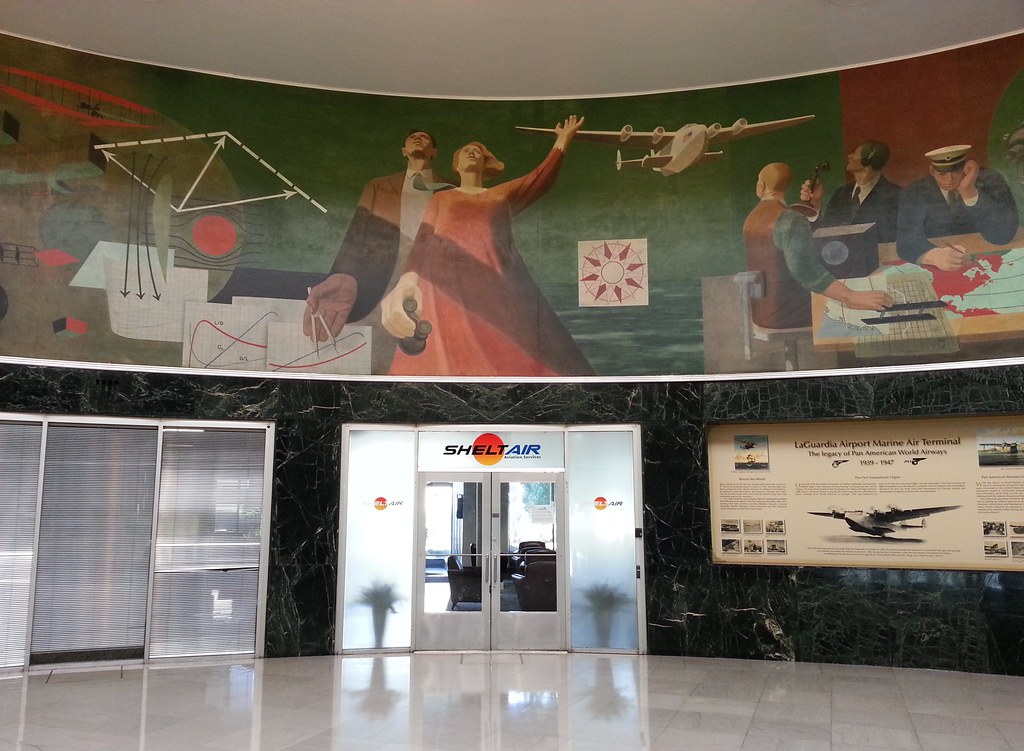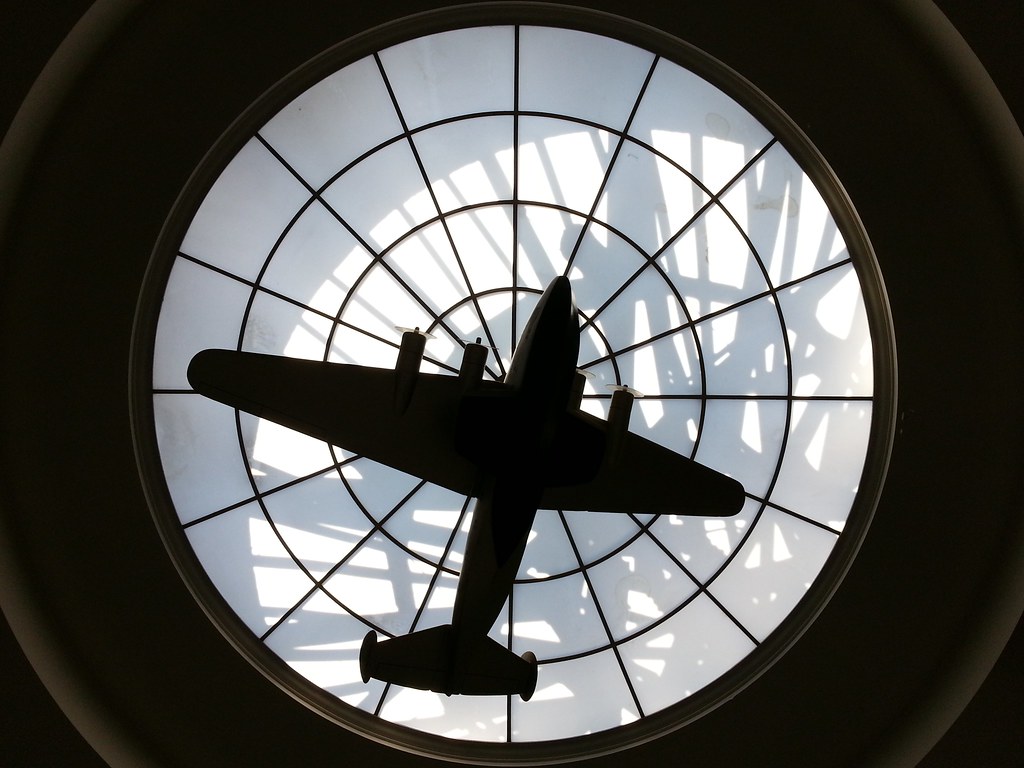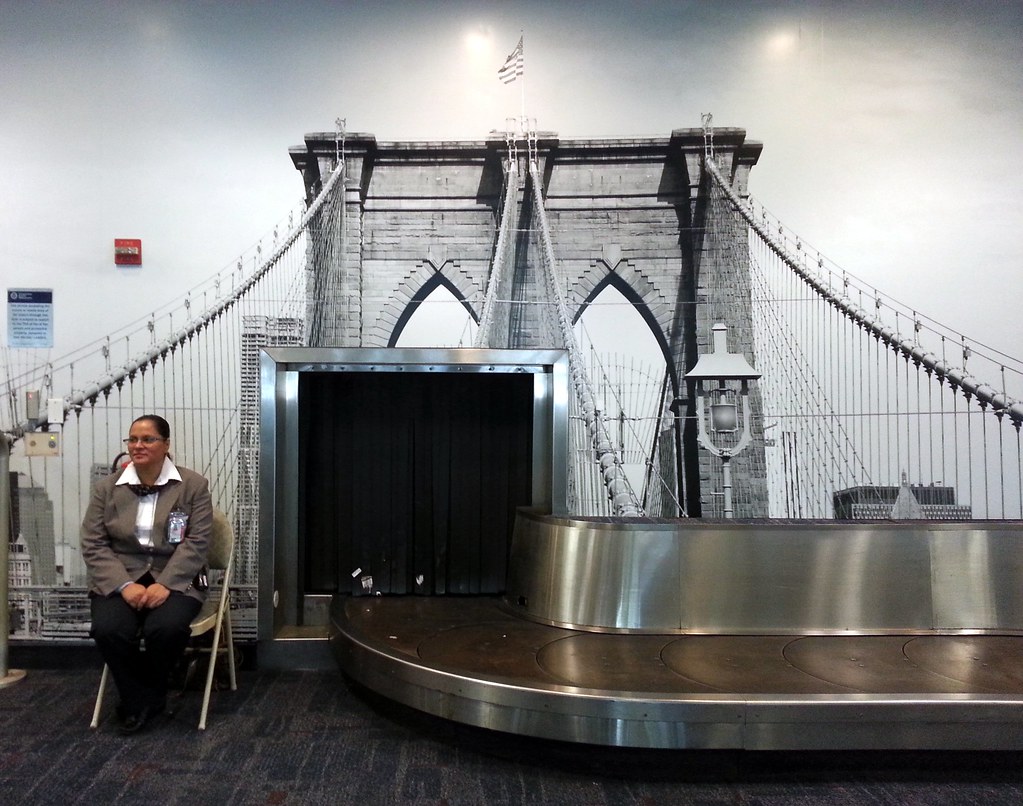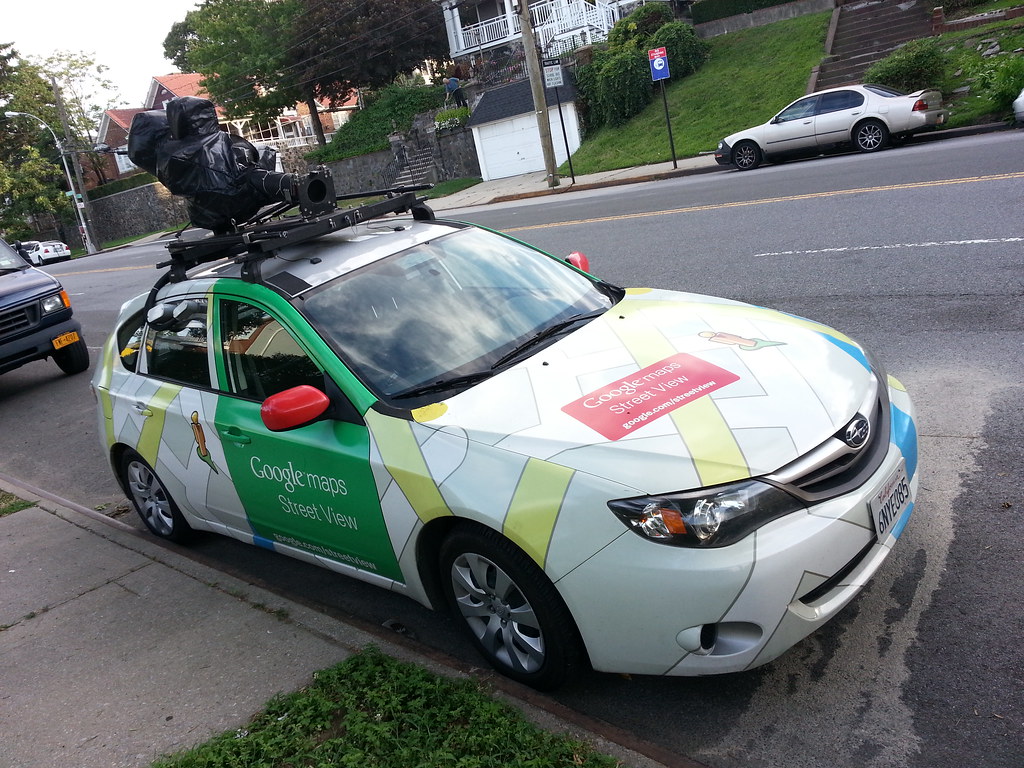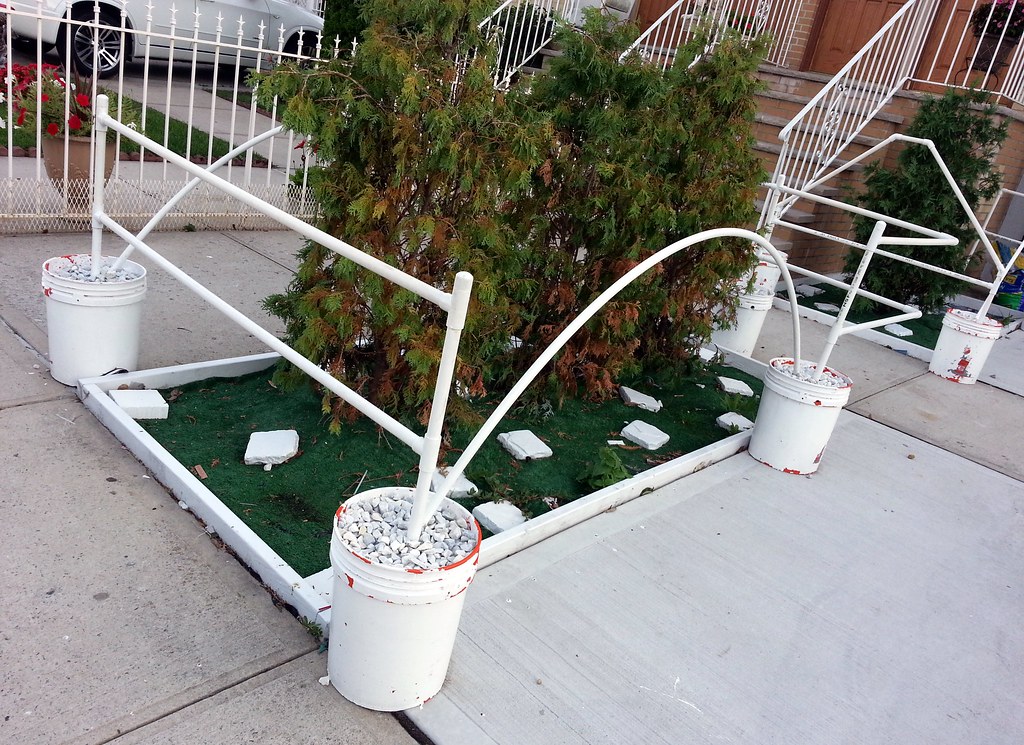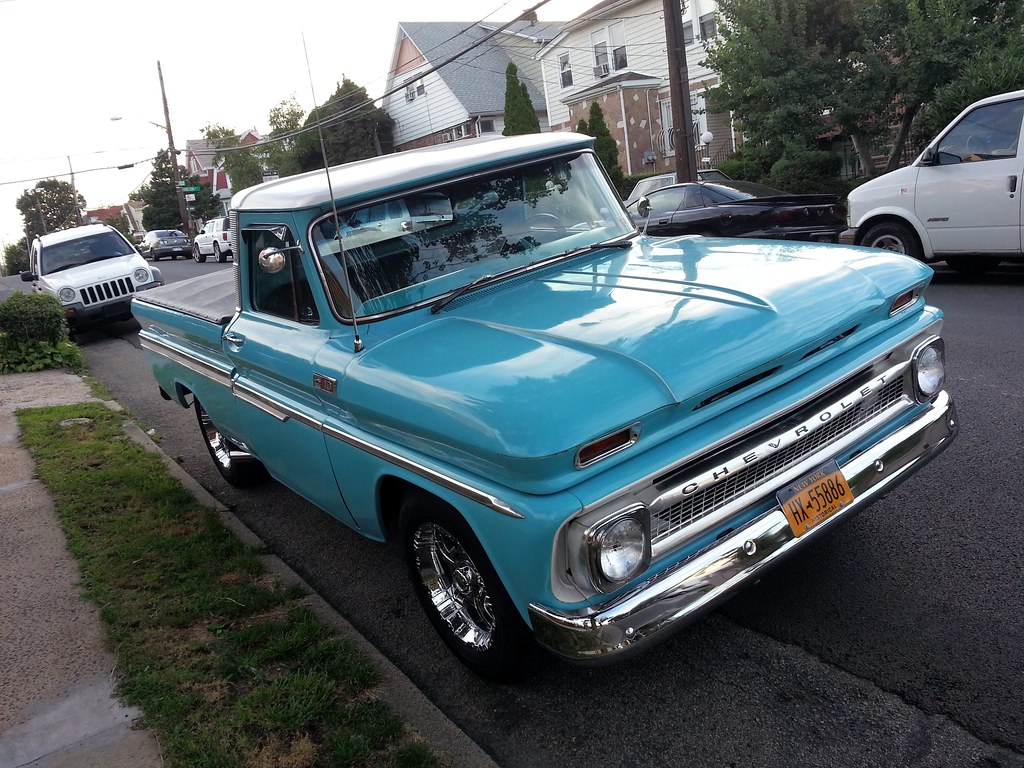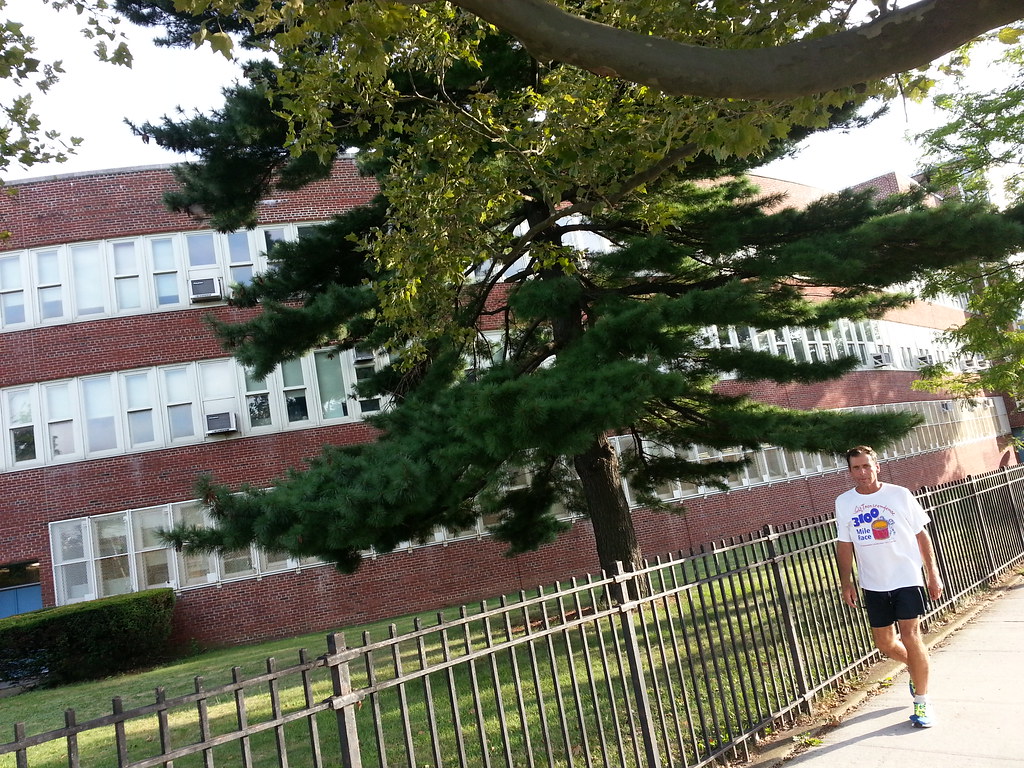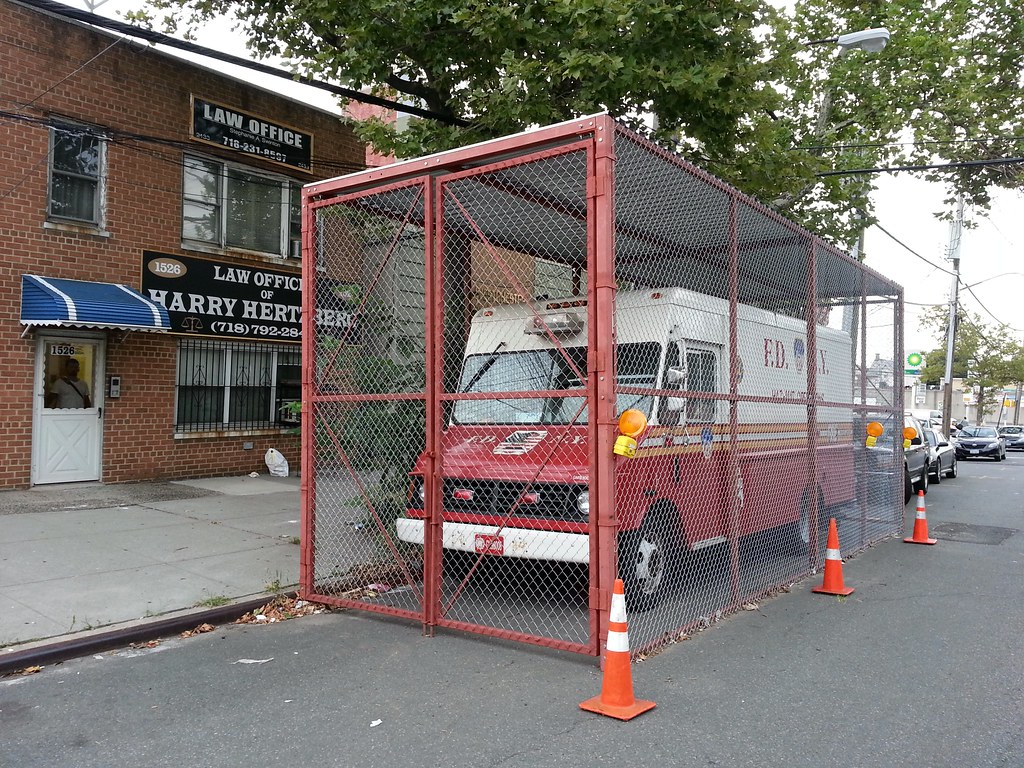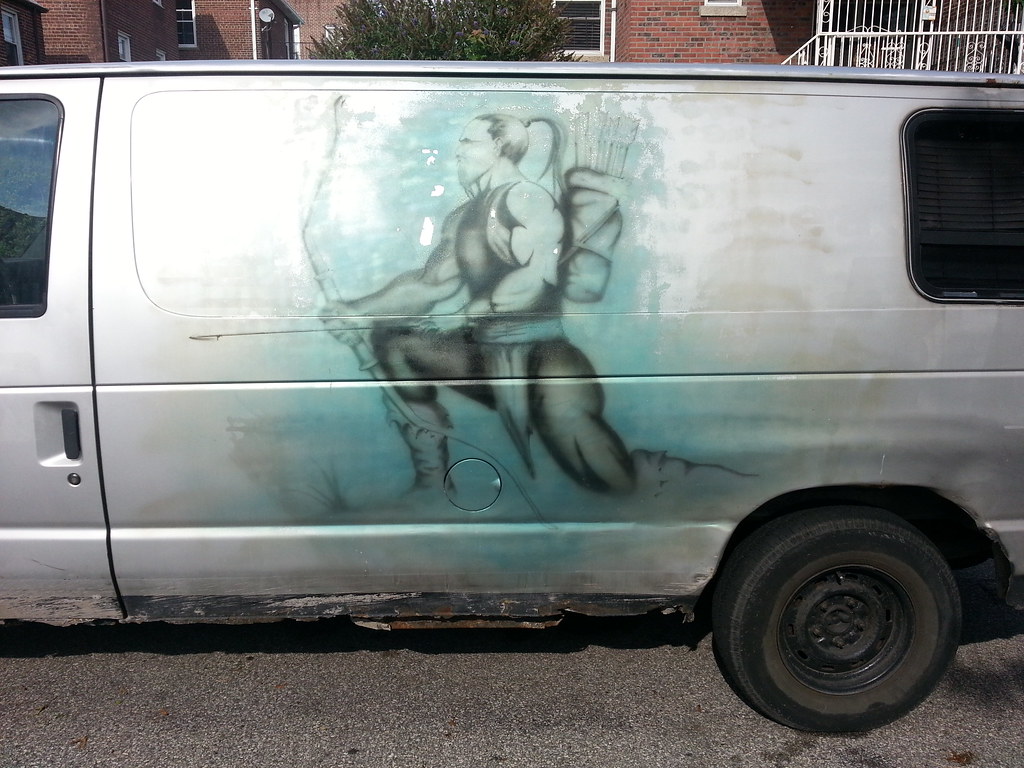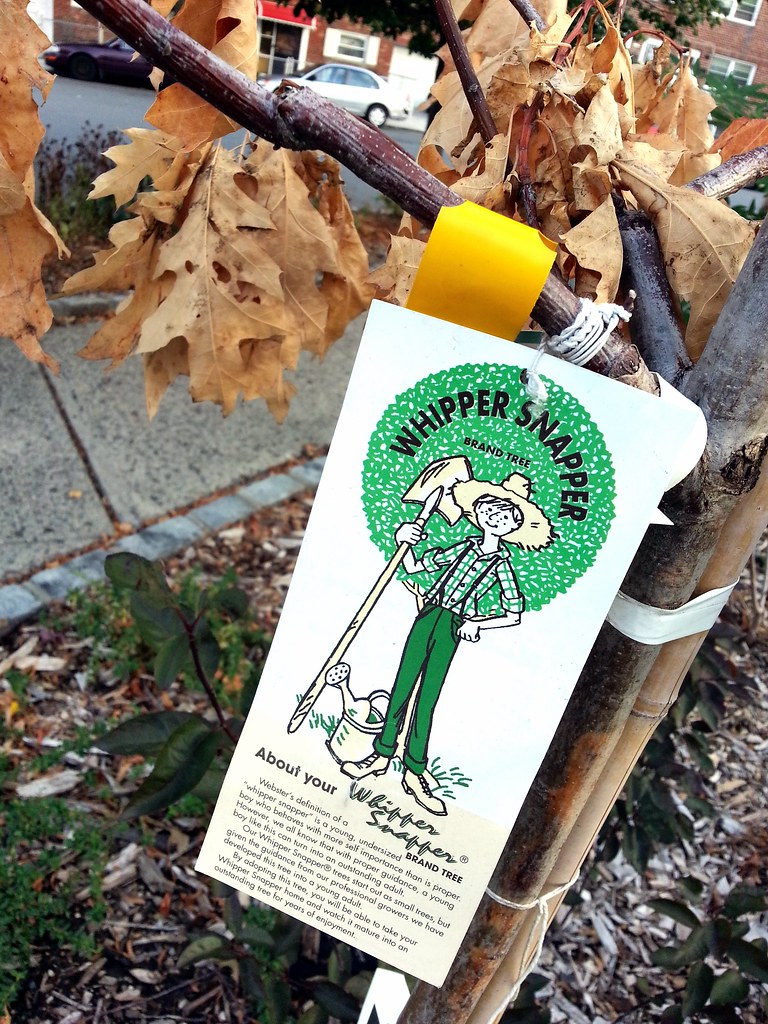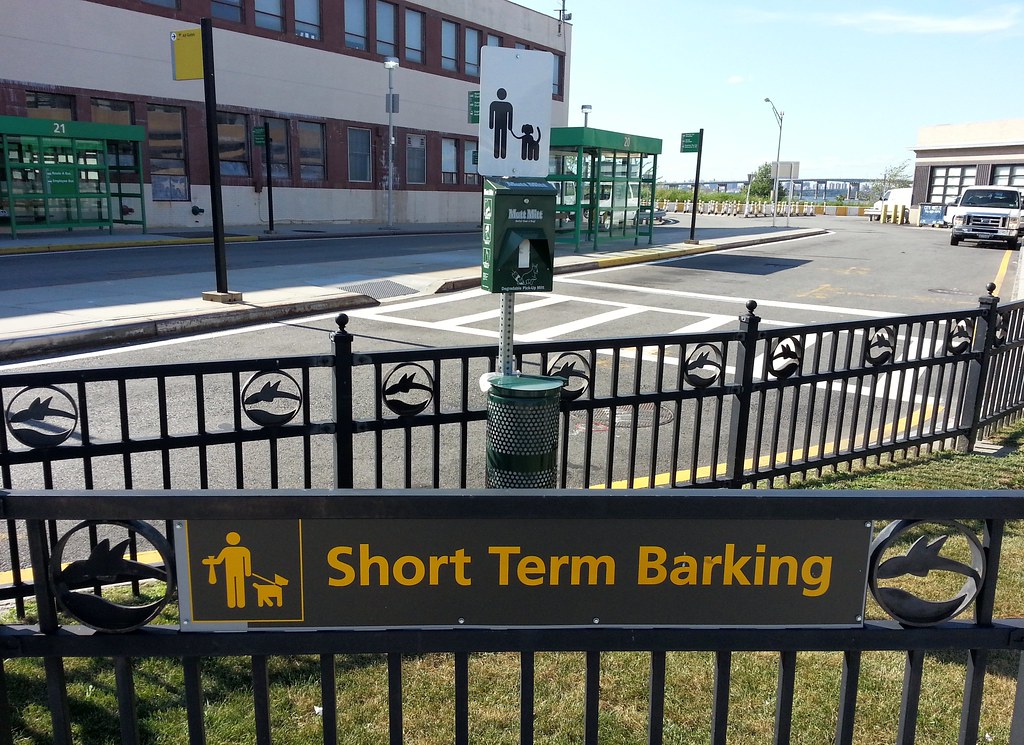
"Welcome to Terminal A / Marine Air Terminal's Pet Relief Area"
(Note the continuation of the flying fish motif.)
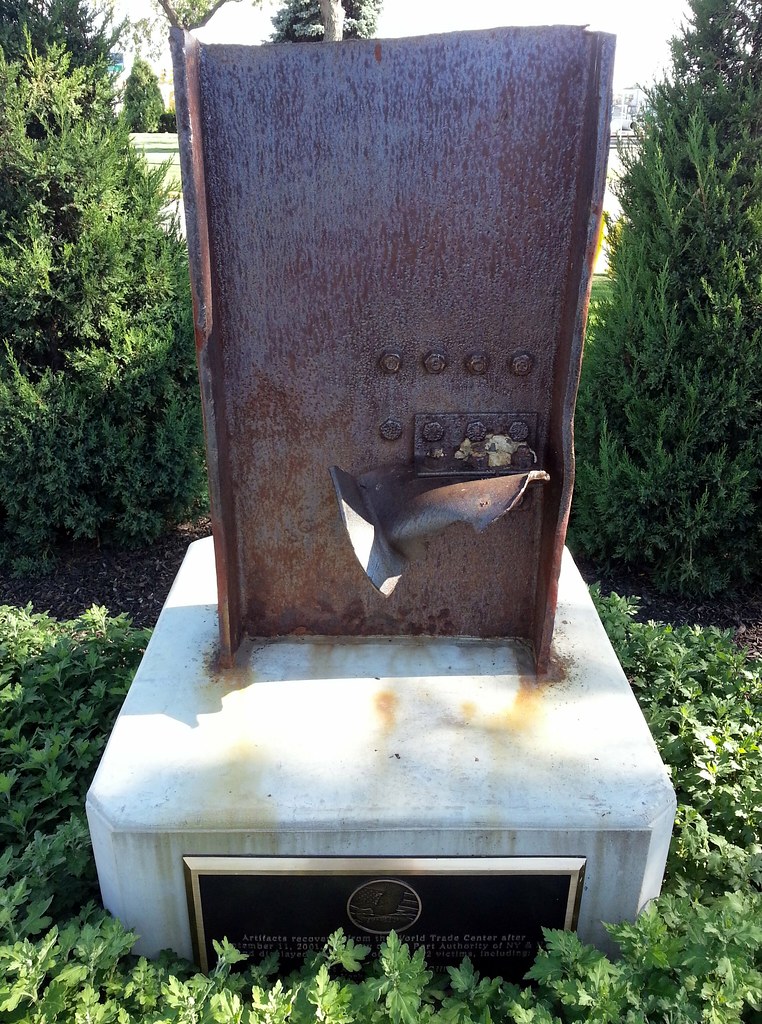
This is part of a little memorial garden outside the Marine Air Terminal. The plaque reads:
Artifacts recovered from the World Trade Center after September 11, 2001, courtesy of The Port Authority of NY & NJ and displayed in memory of the 2,752 victims, including:
37 Port Authority Police Officers
23 New York City Police Officers
343 New York City Firefighters
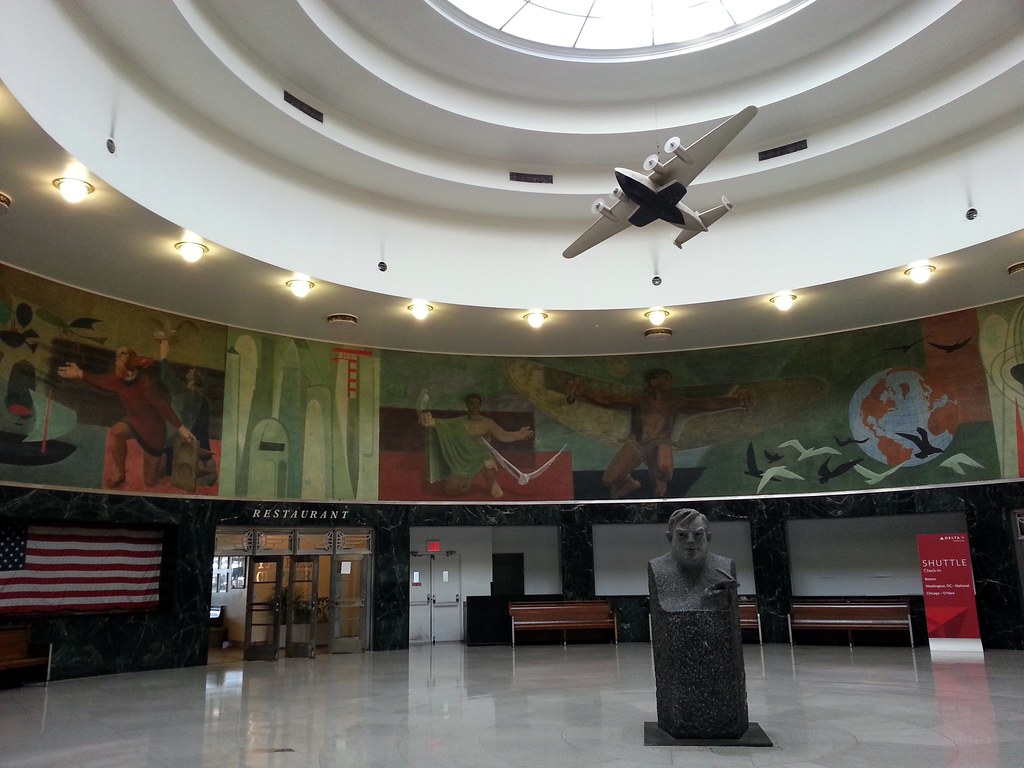
I love the rinky-dink model airplane dangling from the ceiling! That's a bust of Fiorello La Guardia in the center; the 12-foot-high painting encircling the room ("Flight" by James Brooks) is supposedly the largest mural commissioned by the WPA. It was painted over in the 1950s, but was deservedly restored three decades later.

Built in 2010, this tower replaced LaGuardia's old "Swiss cheese ice cream cone".

This is apparently where the Port Authority's duty to the pedestrian terminates. Heading out of the southeastern corner of LaGuardia, the concrete path gives out at this little hill; a well-worn dirt trail takes you the last 50 yards or so to a pedestrian bridge over the Grand Central Parkway.

I can peer into your life too, Google! For example: judging by the napkins in the passenger seat, I take it you are a fan of Dunkin' Donuts.
(Or have I just unwittingly played along with an insidious new advertising strategy? Perhaps Google can now embed ads directly into the physical reality of our daily lives!)
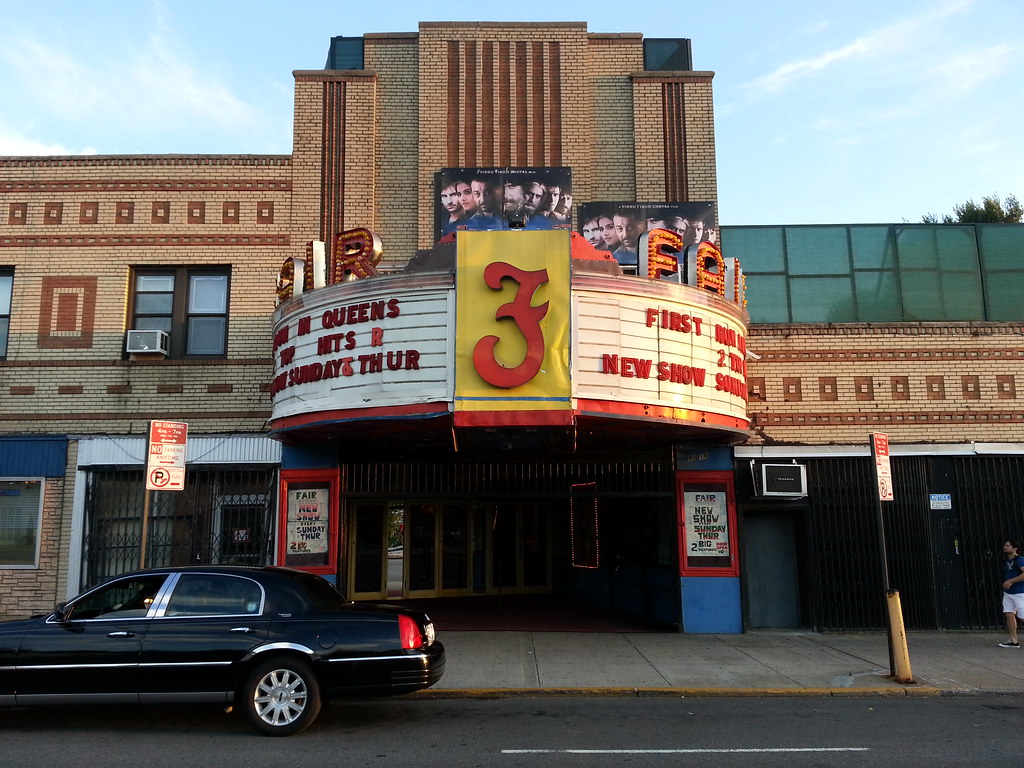
From the street and on the Web, this theater appears to be devoted to Bollywood films. But that's not quite the whole story.

It's Day 52, the last day of the Self-Transcendence 3100, and Vasu just knocked out his 3100th mile, making him the sixth and final runner to complete the race in its entirety this year. That's Pranjal enjoying a piece of cake on the seat to his left; the runners who've already finished still come out to the course to support the others.

Walking a lap and chanting together are Vasu (who's doing an additional 13 laps to reach 5000 kilometers) and the remaining five runners who won't quite reach 3100 miles this year.
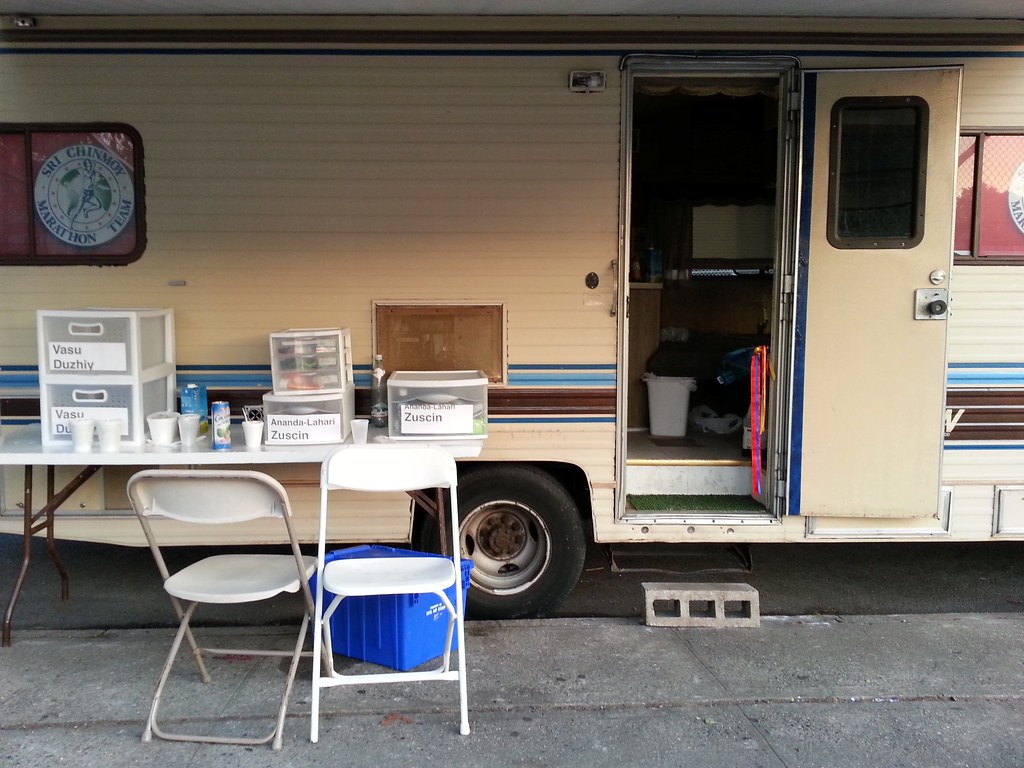
This is one of three support vehicles on the block — the runners' homes away from home. Actually, it probably makes more sense to consider the racecourse their home, making the places where they go to sleep for 4-5 hours each night their homes away from home.
However you prefer to phrase it, these vehicles are where the runners go during the day to take a break, lie down, and maybe nap for 30 minutes or so.
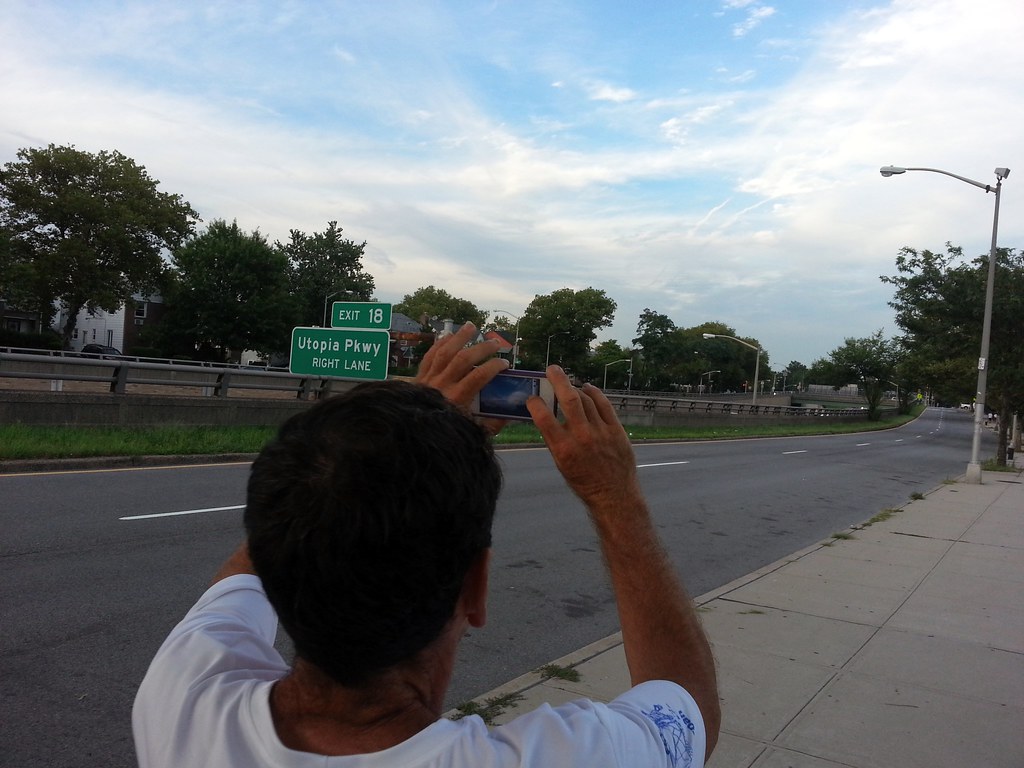
Arpan snaps a photo of the gorgeous sky on his final trip around the block (they're not running until midnight tonight; the race will be over as soon as Vasu finishes 5000 kilometers).
Having spent 52 days in a row out here, running around and around and around, from 6 AM to midnight, Arpan told me he can barely even remember what life was like before the race started. He hasn't had to think about work (he's a carpenter); he hasn't even had to prepare a meal for himself in all that time. His one and only job was to keep going around the block. No matter the weather, and no matter the pain, he kept circling. That was his sole focus — his identity — for almost two months.
And this is his last lap.
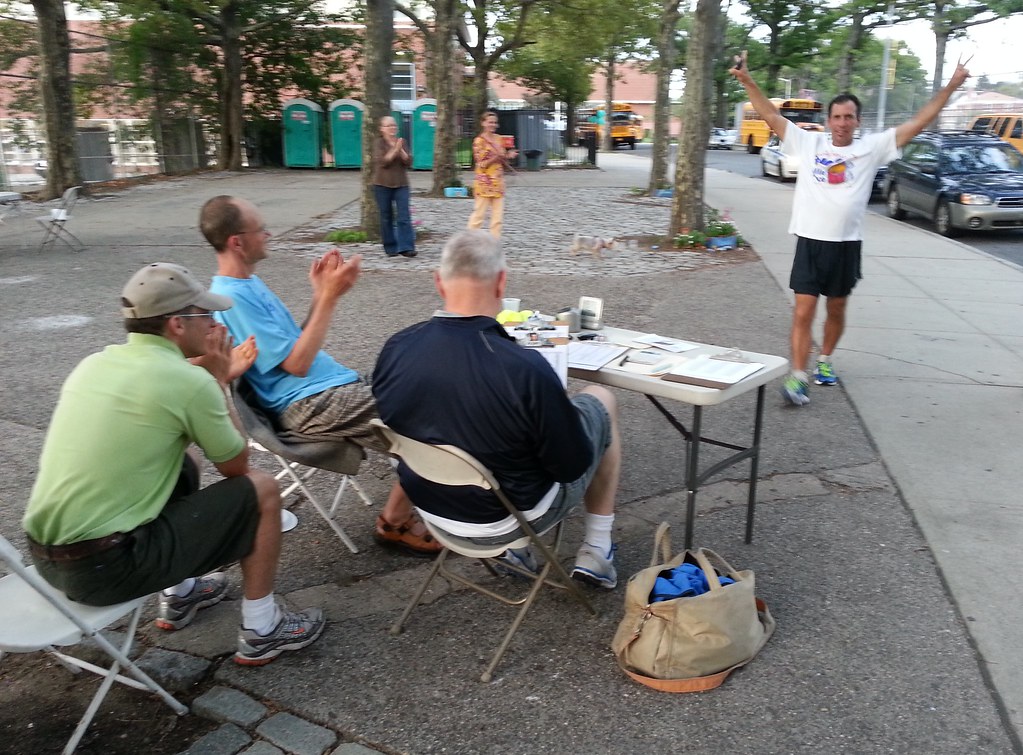
Arpan didn't quite make 3100 miles this year, but he still managed to finish with 2742 — more than two marathons per day — which broke the previous 60-and-over record of 2700 miles. That's Pushkar in the blue shirt, applauding his efforts.
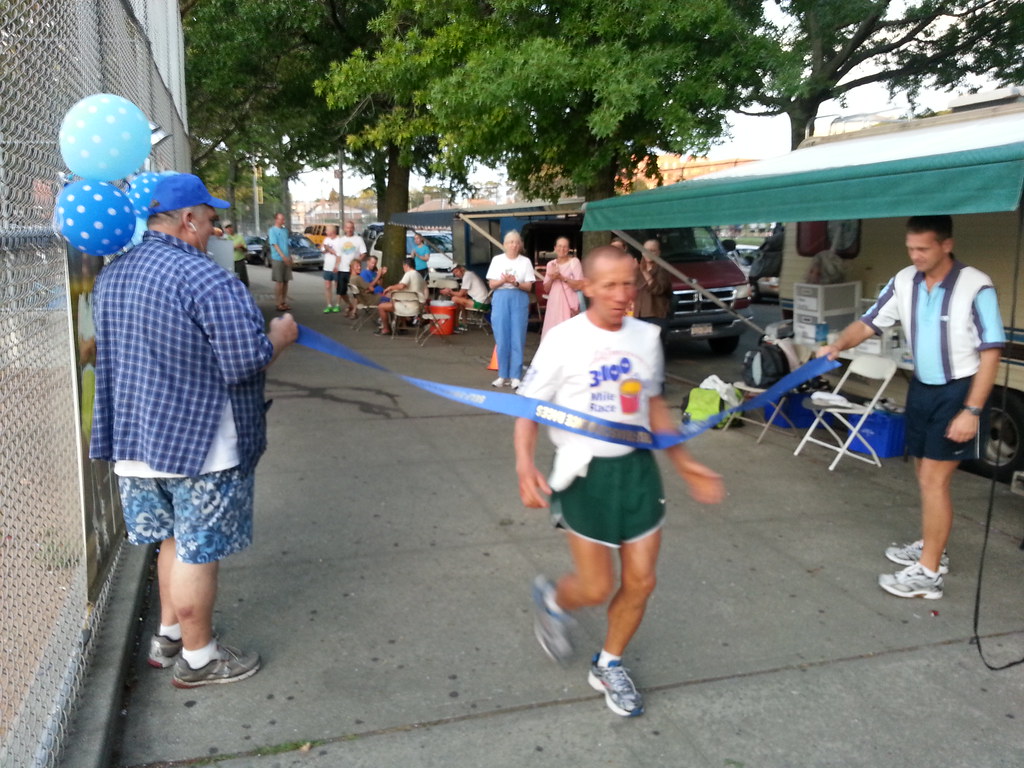
Vasu completes his 5000th kilometer, and the final lap of the entire race.
(If you've looked closely, you may have noticed that the runners seem to be going different directions on different days. To even out the strain on their legs, they alternate between clockwise and counter-clockwise running each day; otherwise it would always be the same leg on the inside every time they turn a corner.)
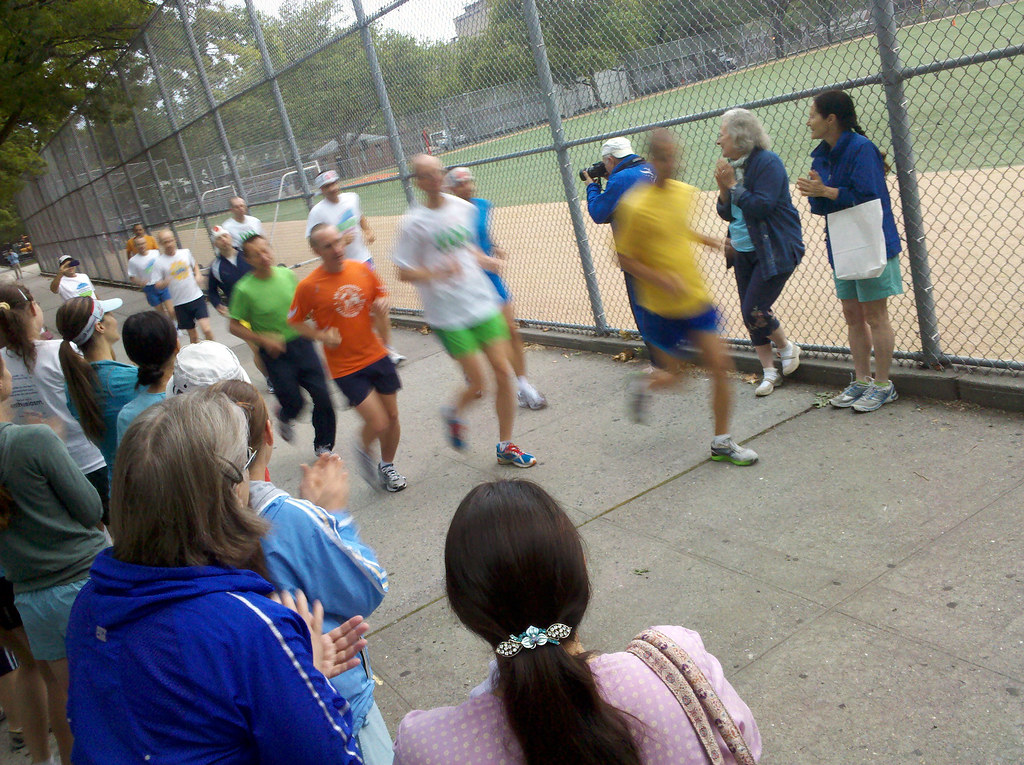
Now that it's complete, you can see a compilation of all my posts from this year's race here.
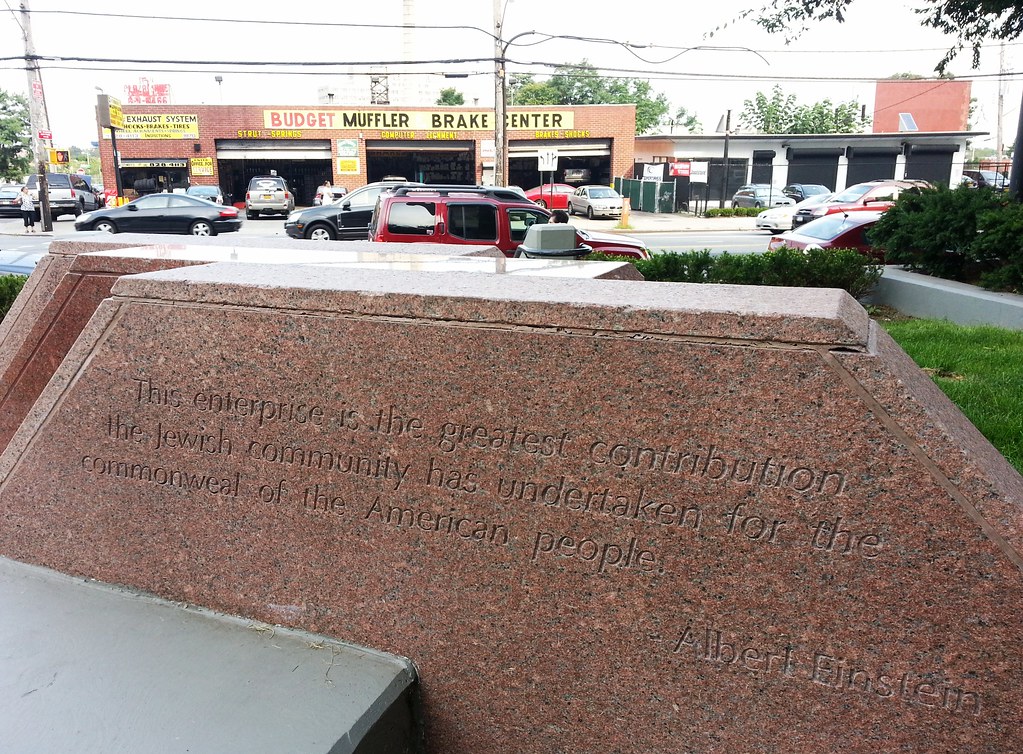
Either that, or he's talking about the adjacent Albert Einstein College of Medicine.
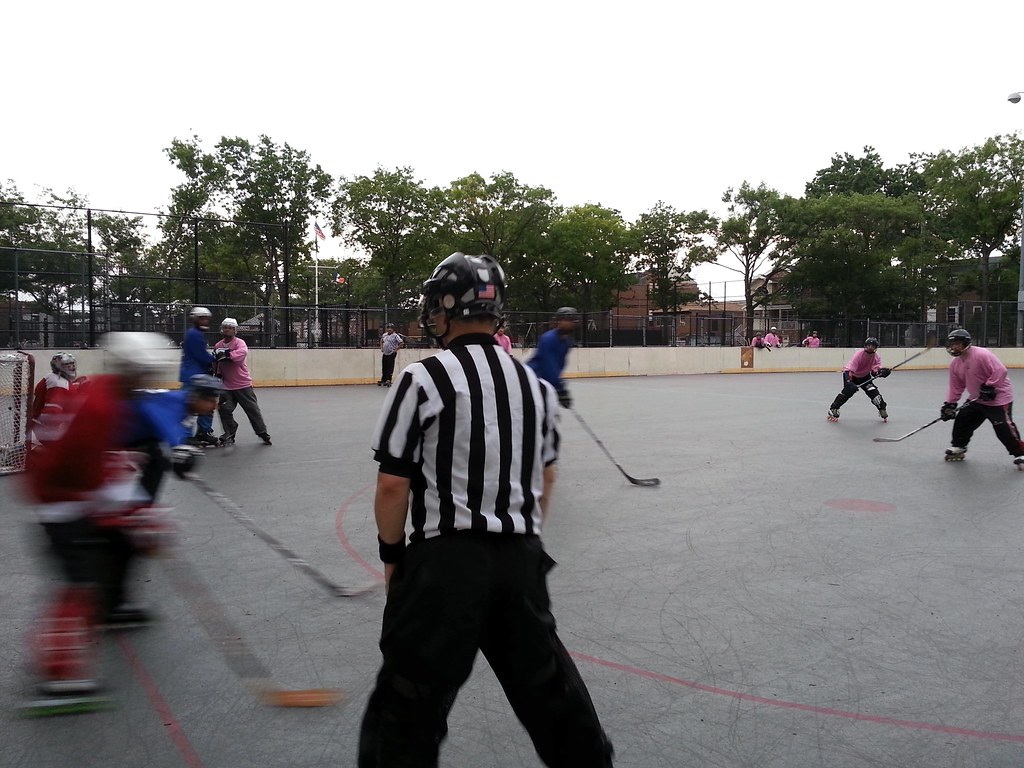
Atop this playground, and much of the rest of the neighborhood, once stood the enormous Morris Park Racecourse, built in what was then Westchester County (and is now the Bronx) to replace the soon-to-be-turned-into-a-reservoir Jerome Park Racetrack as the host of the Belmont Stakes. Morris Park opened in 1889 on a day of "terrific hot weather, which set every one to perspiring in Turkish bath fashion", and was declared by the NY Times to be "the finest race track in the world". But its success was short-lived, and by 1904 it was closed. It was briefly used as an airfield from 1908 to 1910 before being divided into more than 3000 lots and auctioned off, becoming the residential neighborhood it is today.

Reege grew up on this block of Cruger Avenue in the Van Nest section of the Bronx, in a house that was recently demolished.

This is the Dyre Avenue Line, a remnant of the old New York, Westchester and Boston Railway.

And it wasn't just me: "I do not like broccoli. And I haven't liked it since I was a little kid and my mother made me eat it. And I'm President of the United States, and I'm not going to eat any more broccoli!"

One of several licensed for this little summer carnival in Bronx Park

Stored here at Ranaqua, the Parks Department's Bronx headquarters, this trailer can open up into a concert stage.

